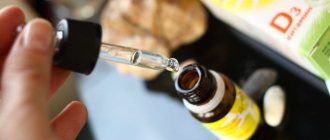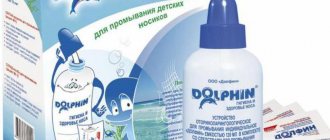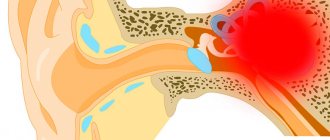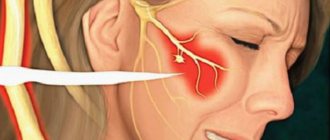Inflammation of the nasopharynx can have various causes, but in any case, a visit to the doctor is necessary. The nasopharynx is a cavity located in the skull that connects the oral and nasal cavities. Consists of nasal, oral and laryngeal parts. The nasopharynx contains olfactory receptors, with their help a person recognizes odors. In its laryngeal part there are tonsils that perform a protective function. They trap viruses and bacteria that enter the human body through airborne droplets. The mucous membrane of the nasopharynx warms the air entering the lungs. The question of why the nasopharynx is inflamed needs to be considered in more detail.
Specifics of the disease
Rhinopharyngitis, or inflammation of the nasopharynx, can be infectious or allergic in nature and occur in acute and chronic forms. It is a combination of two diseases and has symptoms of pharyngitis and rhinitis at the same time. The disease usually begins at the top and then spreads to the lower part of the pharynx and nasal mucosa. The provoking factors are the following:
- hypothermia of the body;
- overstrain of the vocal cords;
- drinking cold drinks;
- smoking.
Most often, nasopharyngitis worsens in the spring, when, after the end of the winter season, a person’s immunity is reduced.
Rhinitis is an inflammation of the nasopharynx that occurs in 3 stages. At the first stage, the patient has a low body temperature, a dry throat, a headache, and sneezing. In the second, nasal congestion, watery discharge appears, and body temperature may rise by several degrees. In the last stage of the disease, there is congestion and gelatinous nasal discharge.
Pharyngitis is an inflammation of the nasopharynx. The pathology can be caused by bacteria or is a complication after suffering from an acute respiratory infection or acute respiratory viral infection.
Acute form of the disease
Acute nasopharyngitis develops due to a viral infection. The disease is accompanied by the following symptoms:
- difficulty breathing;
- nasal congestion;
- sore throat;
- nasal discharge;
- there is a nasal tone in the voice;
- cervical lymph nodes are enlarged.
Examination of the throat shows redness and swelling of the back wall of the pharynx and tonsils. There may be pain in the ear area. The incubation period of the disease lasts 1-4 days.
Symptoms of acute nasopharyngitis:
- presence of pain when swallowing;
- dry mouth;
- low excess of normal body temperature;
- dry cough;
- accumulation of mucus in the nasopharynx;
- hoarseness of voice;
- as it spreads, inflammation of the nasopharynx can affect the auditory tubes, and then hearing decreases and pain appears in the ear area;
- enlarged cervical and occipital lymph nodes;
- swelling and redness of the nasopharyngeal mucosa.
Chronic pathology
It is bacterial or fungal in nature and occurs against the background of an untreated infectious process in the nasopharynx cavity. This form is distinguished by loose mucous membrane of the tonsils. There are several types of chronic nasopharyngitis:
- Catarrhal form. It is observed in smokers and people working in environmentally unfavorable conditions. There is redness of the throat and slight nasal discharge.
- Hypertrophic form of rhinopharyngitis. Characterized by enlarged lymph nodes.
- Atrophic form of the disease. Accompanied by a debilitating cough, crusts form on the mucous membrane, causing the sensation of a foreign object in the throat.
Allergic reaction
The disease is caused by an allergen and is characterized by inflammation of the nasopharynx. The main signs of allergic rhinopharyngitis: runny nose, lacrimation, itchy nose and cough. With allergies, it rarely happens that one half of the nose is blocked. The manifestation of the disease can be confused with a common cold. A runny nose in this form is of a vasomotor nature. When a person suffers from allergic nasopharyngitis, it is necessary to identify the allergen that causes inflammation of the nasopharynx.
Children are much more susceptible to the disease than adults. Rhinopharyngitis can cause severe complications and become chronic. The child has a sore and itchy throat, and the body temperature rises sharply. There is frequent sneezing and watery eyes. The patient complains of headaches in the occipital region. In the first days, nasal discharge is watery and clear. After a few days, the mucus becomes thick. The child has a painful sensation in the throat and has difficulty swallowing. Dry mouth can cause crusts to form. Mucus, flowing into the nasopharynx, causes the child to cough. It is especially important to monitor nasal patency in infants. A stuffy nose will make breastfeeding difficult. To remove mucus from the nose, you need to use a small rubber bulb. Nasal medications can be used strictly as prescribed by your pediatrician. Since it is difficult for infants to rinse their nose, you can use cotton swabs soaked in a weak soda solution.
The inflammatory process is caused by adenoviruses, rhinoviruses, influenza viruses, as well as streptococci and staphylococci bacteria. Most often, acute nasopharyngitis affects young and middle-aged children. First, symptoms of rhinitis appear, then signs of pharyngitis appear. Inflammation of the nasopharynx can affect the remaining parts of the respiratory tract: trachea, lungs and bronchi. In young patients, the pathology may be accompanied by intestinal disorders. A complication of the disease in children can cause inflammation of the middle ear. In some cases, nasopharyngitis is considered one of the first symptoms of scarlet fever or rubella.
At the first manifestations of the disease, you should immediately contact your pediatrician. Treatment procedures should be aimed at clearing the airways. Plenty of warm drinks are recommended: tea, compotes, fruit drinks, juices, medicinal decoctions. From the first days it is necessary to inhale, rinse your nose and gargle. To remove mucus and facilitate breathing, it is better to place the child on a high pillow. You should regularly ventilate the children's room and humidify the air. The temperature in the room where the sick child is located should not exceed 22°C. For treatment use:
- Antiviral drug Interferon.
- Liquids for washing the nose Aquamaris, Salin.
- Antipyretics: Nurofen, Panadol, Tsefekon suppositories.
- Throat rinses: Chlorophyllipt, Rotokan.
- Protargol nasal drops.
- Children over 2 years of age are prescribed lozenges.
- Vitamins and minerals.
- Antihistamines.
The allergic form of rhinopharyngitis in children is especially aggravated in the spring, at the time of flowering of bushes and trees. Allergens that cause disease may also be present in food, detergents, and household chemicals. The child may be allergic to pet fur, dust, and a number of medications. If a child shows signs of allergic rhinopharyngitis, it is necessary to stop contact with allergens and the symptoms of the disease will disappear fairly quickly.
To prevent the disease, children should be hardened from an early age, provided with a balanced healthy diet, and maintained a proper daily routine. Take a walk in the fresh air every day, teach sports activities from an early age. To strengthen the immune system, regularly take vitamin and mineral complexes.
Therapy for the disease
Such an ailment must be treated immediately, so when the first signs appear, you should immediately consult a doctor. Basic treatment procedures are usually aimed at clearing the airways. So from the very beginning of the disease it is necessary to rinse the nose and throat, and also do inhalations. In addition to all of the above, the following drugs are also used:
- nasal drops (Protargol);
- antihistamines;
- antiviral drug Interferon;
- means for treating the nose (Salin, Aquamaris);
- throat rinsing preparations (Rotokan, Chlorophyllipt);
- antipyretic drugs (Nurofen, Panadol, Tsefekon suppositories).
In addition, vitamin complexes are often prescribed to strengthen the immune system. If the elevated temperature persists for at least 3 days, an antibiotic is also prescribed.
Treatment tactics
Since the disease is accompanied by symptoms of two diseases, the treatment is complex. It is necessary to eliminate the provoking source of the disease. Treatment should begin with eliminating mucus from the nasal cavity. Medicines prescribed for topical use:
- Nasal medications are prescribed to eliminate mucus. Drops that constrict blood vessels should not be used for more than 5 days.
- Rinse your nose several times a day.
- Gargling to reduce pain when swallowing.
- Lozenges for the throat.
- It is necessary to do physical procedures.
- Vitamins.
- If the high fever persists for more than 6-9 days, antibiotics should be prescribed.
In the acute period of the disease, bed rest is recommended.
It is necessary to drink as much fluid as possible. You should avoid spicy and cold foods.
Treatment of inflammation of the nasopharynx at home:
- Herbal collection. Chamomile, sage, calendula and oregano are taken in equal quantities. 1 tbsp. l. collection is poured 200 g. hot water and infuse for 10-20 minutes. Drink 3 times a day, 0.5 tbsp.
- Sage with milk. 2 tsp. herbs are brewed in 1 tbsp. milk. To avoid getting burned, drink the decoction warm, 4 tbsp. l. three times a day.
- Beetroot juice. Squeeze it out and drop 2-4 drops into the nose, repeat the procedure every 3-4 hours.
- Elecampane root. 2 tbsp. l. crushed root brew 1 tbsp. boiling water and leave to simmer for 5-7 minutes, then infuse for 4 hours. Drink 1 tbsp. l. before meals, 3 times a day.
- To clear your nose, you need to instill 5-6 drops of freshly squeezed Kalanchoe juice.
- For inflammation of the nasopharynx, inhalations will help well: with boiled potatoes, medicinal herbs, aromatic oils.
- Washing with calendula. Add a little salt and 1 tsp to 0.5 liters of warm water. calendula tinctures. Rinse your nose in the morning and before bed.
- Nasal drops with wild rosemary. In 100 gr. Add 2 tsp vegetable oil. wild rosemary The mixture is infused for about 3 weeks in the dark; it is necessary to shake the mixture every day. Place 1 drop into your nose 3 times a day for a week.
- Pine buds for a sore throat. 2 tsp. kidneys are poured into a thermos, boiling water is poured and left for at least 3 hours. Take 2-3 sips when you have a sore throat.
- To gargle 1 tbsp. l. flax seed and marshmallow root pour 200 g. hot water, leave for 20 minutes. You should gargle with the strained broth three times a day.
- Plantain infusion for cough. 2 tsp. dried herbs pour 1 tbsp. boiled water and leave for 2 hours. Take 1 tbsp. l. 3 times a day before meals.
Rhinopharyngitis - symptoms
A common diagnosis of rhinopharyngitis is made for chronic and acute inflammation of the mucous membranes of the pharynx and nose. The disease is similar to two similar ones, which are concentrated in the same area. This is inflammation of the nasopharynx without fever and runny nose - pharyngitis and rhinitis. The combination of both pathologies is their complication. The disease is characterized by symptoms of two ailments at the same time: sore throat, sore throat, nasal discharge, elevated body temperature.
If inflammation of the nasopharynx has developed, the symptoms depend on the form of the disease. Acute pathology appears against the background of ARVI, its incubation period is from 1 to 5 days. The first signs are weakness, headache, fever, and general malaise.
Then the following symptoms appear:
- nasal congestion;
- sneezing;
- liquid snot;
- itching in the nose;
- dryness, pain, sore throat;
- redness, swelling of the back of the throat;
- pain radiating to the ear.
The chronic form of the disease is characterized by:
- loss of smell;
- voice change;
- enlarged lymph nodes;
- purulent nasal discharge;
- nausea and vomiting;
- noticeable pallor of the mucous membrane of the throat.
In the absence of proper treatment, acute pathology can be complicated by other diseases, for example, the development of sinusitis, laryngitis, bronchitis, otitis, pneumonia, false croup (in children). Or the disease will progress to a chronic stage, which is difficult to treat and, as a rule, is characterized by short periods of remission and regular exacerbations.
Those who are faced with inflammation of the throat and nose are wondering: how to treat nasopharyngitis? At any age, complex therapy should be aimed at relieving the main symptoms, and in the case of an allergic form, eliminating the provocateur. With the exception of complex cases, activities are carried out on an outpatient basis, but the patient is advised to remain in semi-bed rest, drink more, and humidify the air in the room.
Drug therapy for nasopharyngitis involves the use of nasal sprays and drops of different spectrum of action. Before treating inflammation of the nasopharynx, you need to determine the severity and stage of the pathology.
Sanitation of the oral and nasal cavities is carried out with the help of certain medications:
- At the initial stage of a runny nose, saline solutions and sprays (Aquamaris, Aqualor, Marimer) are effective, which clear nasal secretions.
- In the phase when serous discharge is present, rinsing is continued and vasoconstrictor and astringent drops are added: Nazivin, Nazol, Protargol.
- Moisturizing preparations (Otrivin) are useful at all stages.
- Inflammation and sore throat are treated with antiseptics in the form of tablets (Faringosept, Strepsils) and aerosols (Yox, Hexoral).
- Allergic rhinitis is eliminated with the help of antihistamines (Loratadil, Claritin, Cetirizine) and glucocorticosteroids in the form of sprays (Beclomethasone, Mometasone Furoate).
In addition to the medications presented, procedures such as inhalation for inflammation of the nasopharynx using:
- saline solution;
- antibacterial drug Dioxdin;
- antibiotic Maramistin.
For gargling use:
- herbal decoctions (chamomile, eucalyptus);
- sea salt solution.
The procedures are carried out several times a day after meals.
You can gargle and do inhalations for rhinopharyngitis using folk remedies. They are less effective in advanced cases, but are able to cope with the initial stage and alleviate the course of a serious disease.
You can put the following in your nose:
- fresh beet juice;
- Kalanchoe juice;
- propolis tincture with honey;
- calendula decoction.
Suitable for rinsing:
- thyme;
- chamomile;
- sage (leaves);
- Oak bark.
In advanced cases, before rinsing the nasopharynx during inflammation, it is recommended to consult a doctor. With the doctor's approval, you can use a folk recipe for treatment to get rid of phlegm. It contains well-known plants that have a mucoltic effect that thins phlegm.
Inflammation of the nasopharynx is a common pathology that worries people of all ages, especially in the spring and autumn. In the absence of proper treatment, nasopharyngitis progresses, leads to the development of respiratory tract diseases (bronchitis, laryngitis) and becomes chronic, interfering with normal life. Getting rid of the problem must be approached comprehensively and the therapy must always be completed.
Preventive measures
Preventive measures are as follows:
- Treat infectious and viral pathologies in a timely manner.
- Avoid drafts, wet shoes in rainy weather and hypothermia of the whole body.
- At the first signs of a cold, it is recommended to rinse your nose with salt water, inhale and take a hot bath.
- In the spring-summer season, during the flowering period, you should take antiallergic drugs.
- Take vitamins and immunostimulants regularly to strengthen the body's defenses.
- Hardening the body, daily contrast shower.
- Rejection of bad habits.
During the heating season, you should use humidifiers. Dry air has a negative effect on the mucous membranes.
Treatment methods for nasopharyngeal inflammation and prevention
Methods for treating inflammation of the nasopharynx
Self-treatment of inflammation of the nasopharynx can only lead to a worsening of the situation. The symptoms of nasopharyngitis are similar to those of other colds, which are treated with completely different methods.
Effective treatment for the patient, after establishing an accurate diagnosis, is prescribed by a general practitioner, pediatrician or otolaryngologist (ENT). For a child with a fever, a doctor is called to his home.
The method of influencing the disease will depend on the form and type of inflammation of the nasal and pharyngeal mucosa.
In a protracted acute form of nasopharyngitis, when the back wall of the pharynx is covered with pus, antibiotic therapy is prescribed. Antipyretic drugs for children based on paracetamol and ibuprofen are produced in different forms (syrups, suppositories, powders). Depending on the age of the patient with fever due to inflammation of the nasopharynx, the doctor will prescribe the most appropriate option.
Painful lump behind the ear - common causes, treatment methods
Treatment of the disease:
- Children and adults need to rinse their nose with saline solution. You can buy it at the pharmacy (based on sea salt) or prepare it yourself at home. To do this, use simple kitchen salt, but it is better to use iodized salt. Dilute a spoonful of salt in 1 liter of boiled warm water and bury it in your nose every 2-3 hours. This method clears the nose of mucus and is suitable even for infants.
- Vasoconstrictor drops and sprays for nasal congestion are effective for 8–12 hours. The dosage of the active ingredients is different for children and adults, so consultation with a doctor is required. It is not recommended to use them for longer than 7 days, so as not to cause dependence on the drug. Allergic nasopharyngitis is treated with antihistamines.
- You can relieve inflammation from the throat with local antiseptics (tablets, lozenges, sprays). Before this, it is important to clean the mucous membrane of the nasopharynx from viscous secretions. Decoctions of medicinal herbs have proven themselves well. 1 tbsp. A spoonful of sage is brewed in a water bath in 0.5 liters of water. Gargle with warm infusion 4-5 times a day. You can combine licorice root with coltsfoot leaves and eucalyptus. This infusion helps remove mucus.
- Among medications to relieve swelling of the pharynx, a positive effect will be from Lugol's solution or Povidone-Iodine, Yox.
- Traditional medicine recipes for relieving nasal congestion are popular. Freshly squeezed beet or Kalanchoe juice is instilled into both nostrils using a pipette (2 drops each). It is useful for children to inhale with Borjomi or herbal infusion. In any form of the disease and at any age, it is important to drink plenty of fluids (2–2.5 liters per day).
- The chronic form of inflammation of the nasopharynx is treated with physiotherapeutic methods (UHF, heating). A modern option is the use of bioresonance therapy. Based on the influence of electromagnetic vibrations on human organs. There is no scientific confirmation of the effectiveness of this method yet, but it is popular and does not cause harm.
Types of rash on the palate, complications, methods of diagnosis and treatment
Prevention of inflammation of the nasopharynx should be done from an early age, hardening the child. It is necessary to increase immunity by consuming vitamin complexes, natural juices, fruit drinks with plenty of vitamin C. Proper, healthy food is of no small importance in the body’s ability to resist viruses and infections. It is better to replace bad habits with a morning jog or exercise in the gym or swimming pool.
Inflammation of the nasopharyngeal mucosa is most often caused by a seemingly harmless runny nose. Treatment should not be delayed or the disease should be allowed to take its course, so as not to cause even greater harm to health.










